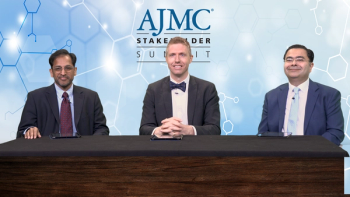
Panelists discuss how the pathophysiology of pulmonary arterial hypertension involves complex mechanisms across multiple genetic and treatment pathways, with over 20 identified genes and four major therapeutic targets including nitric oxide, endothelin, prostacyclin, and activin signaling inhibition.




